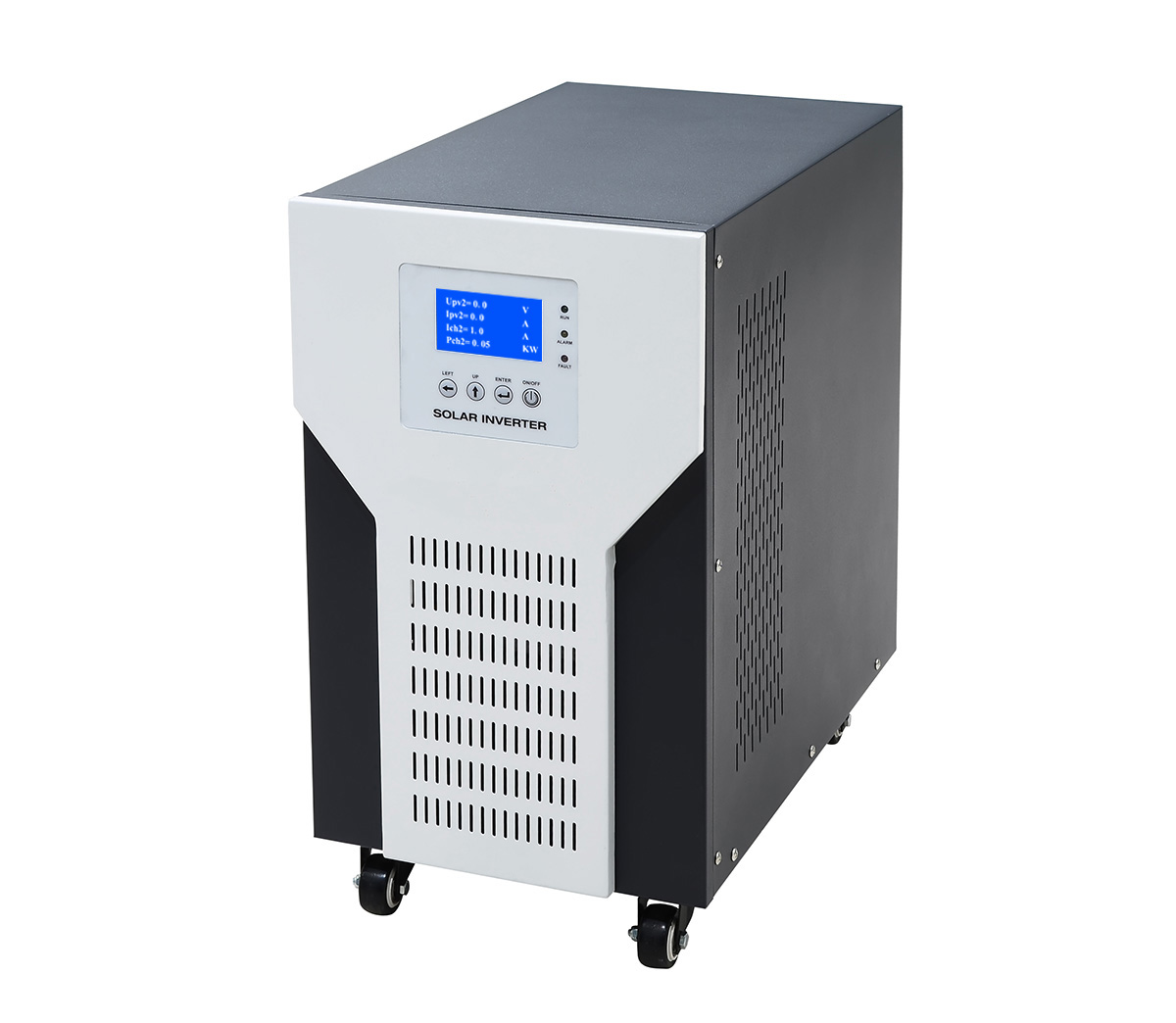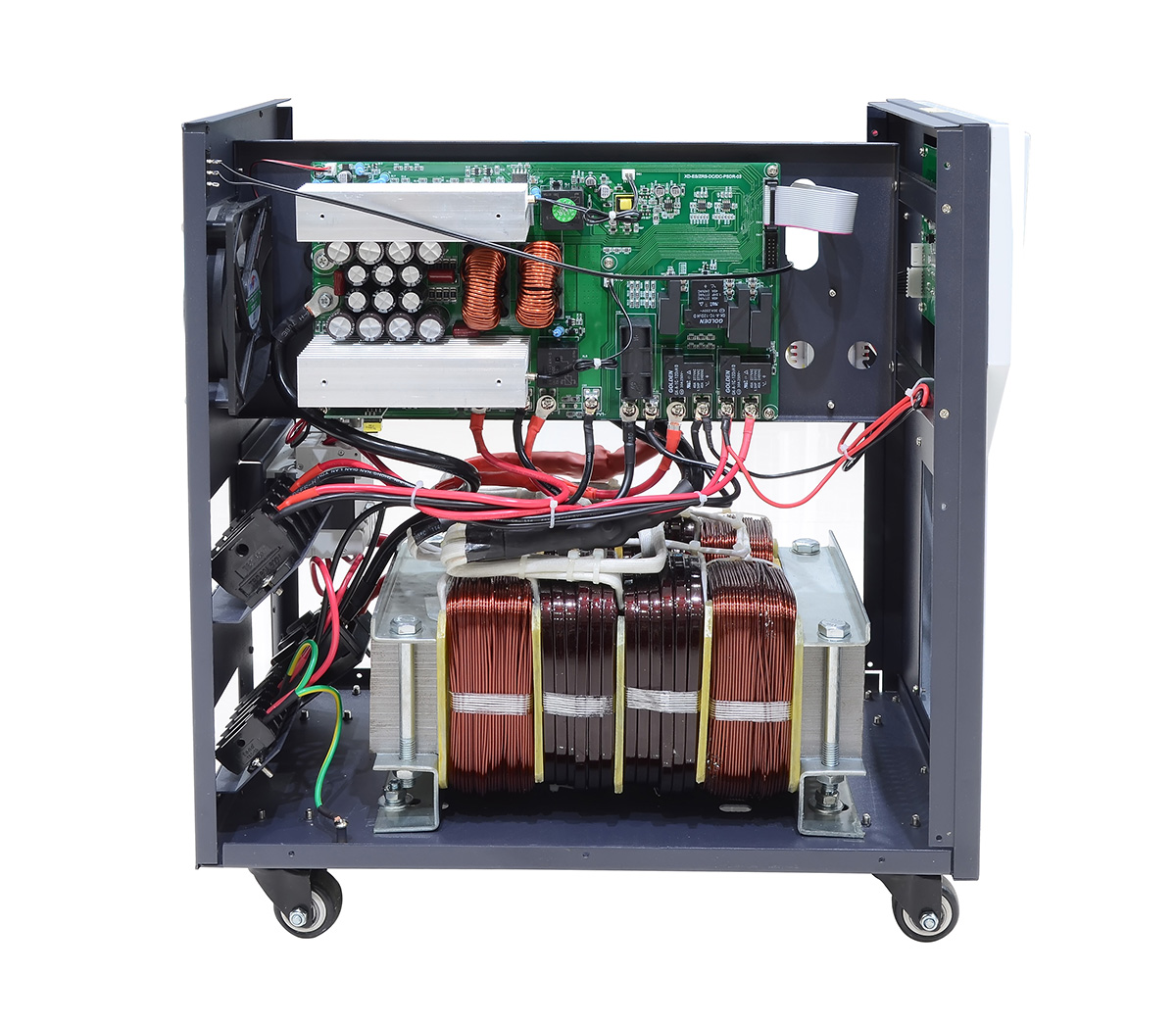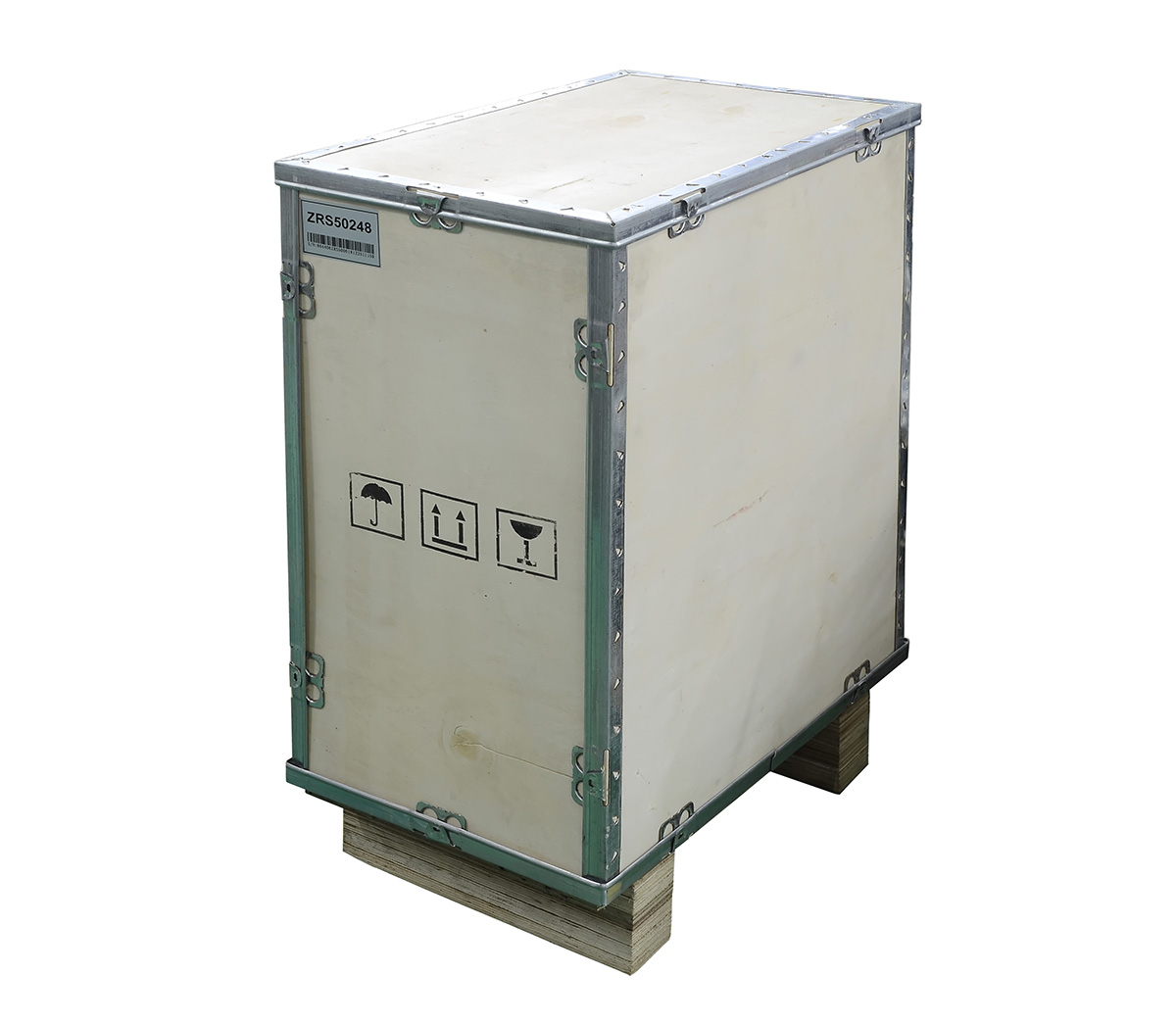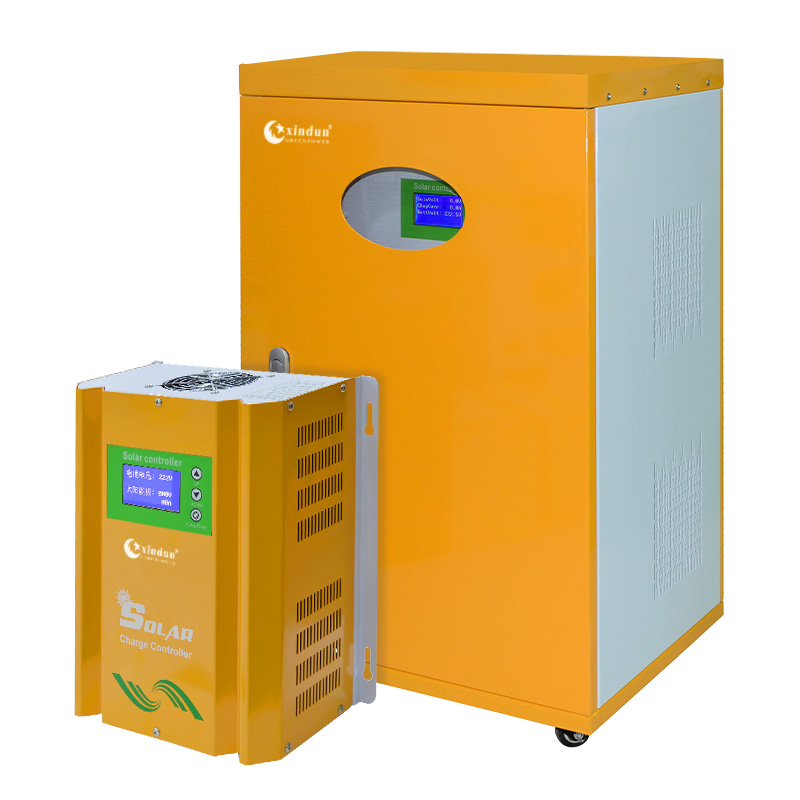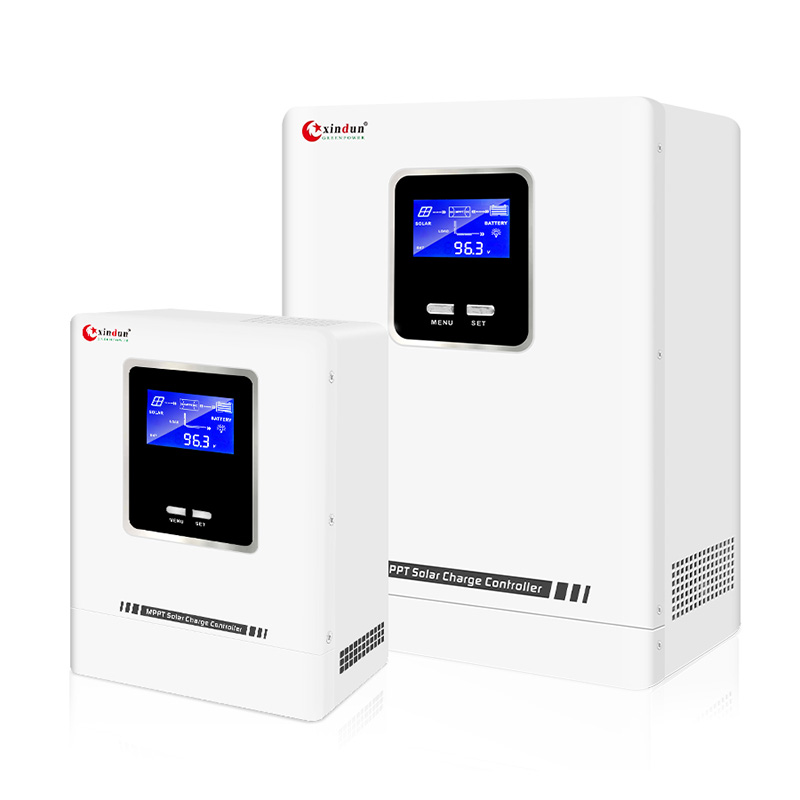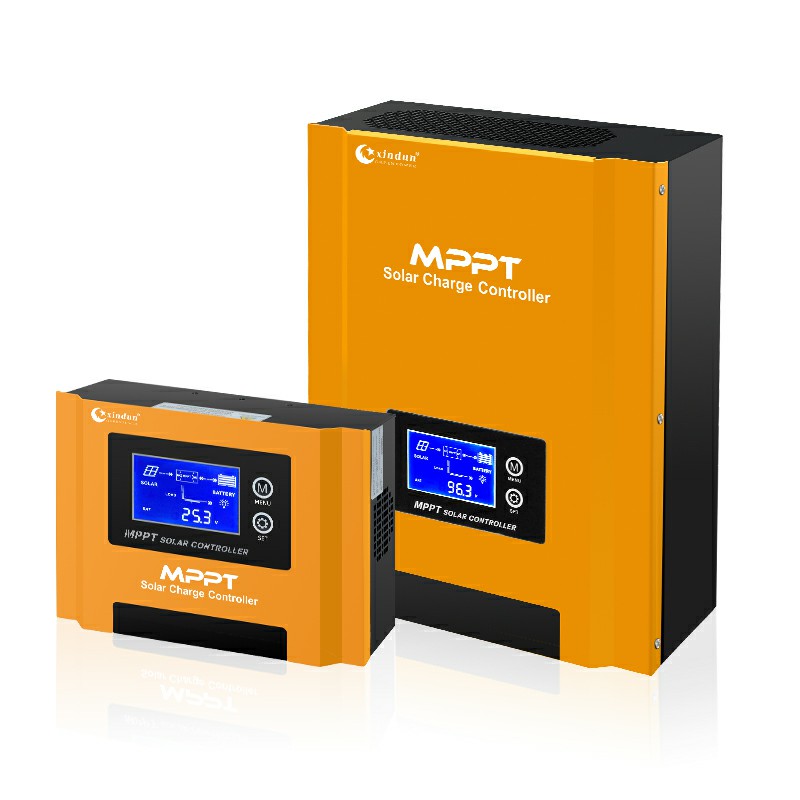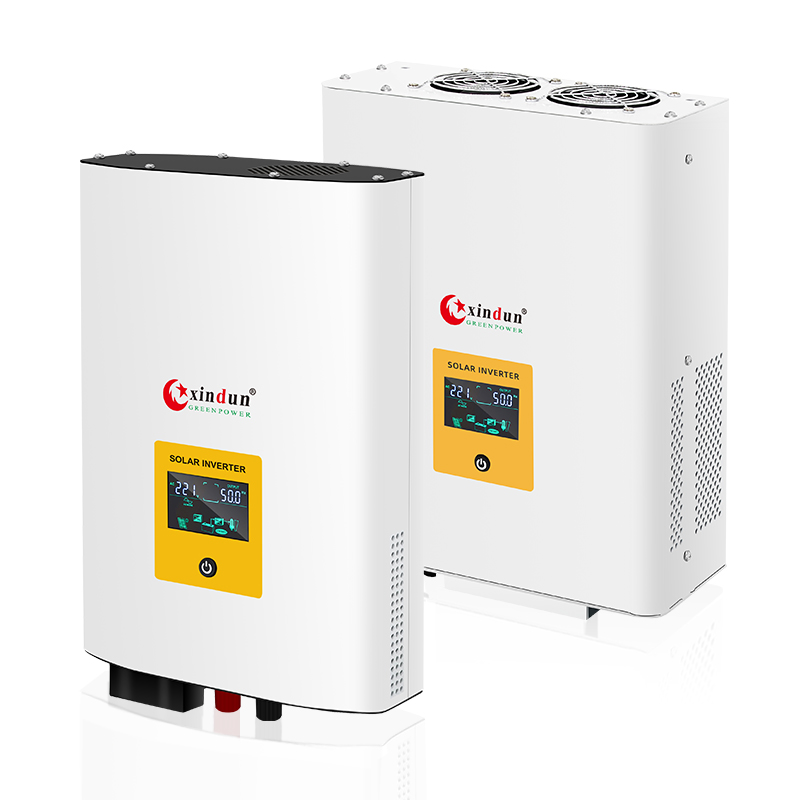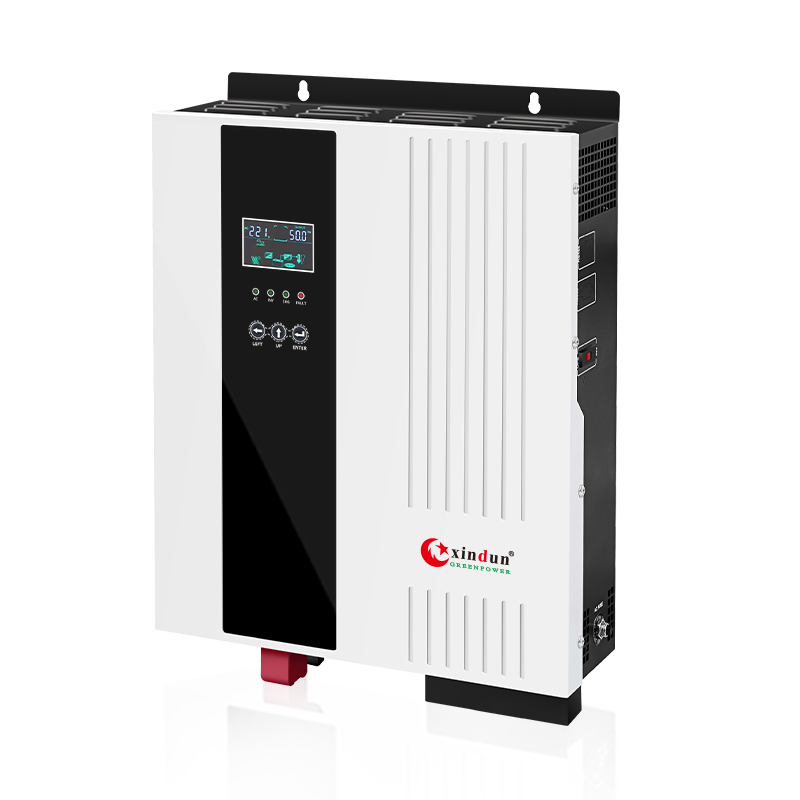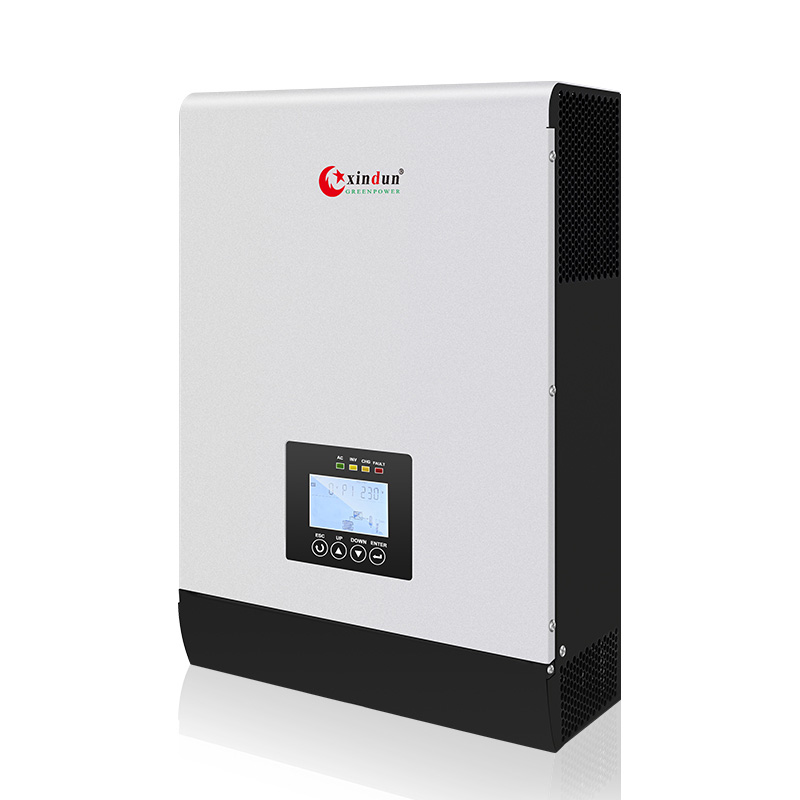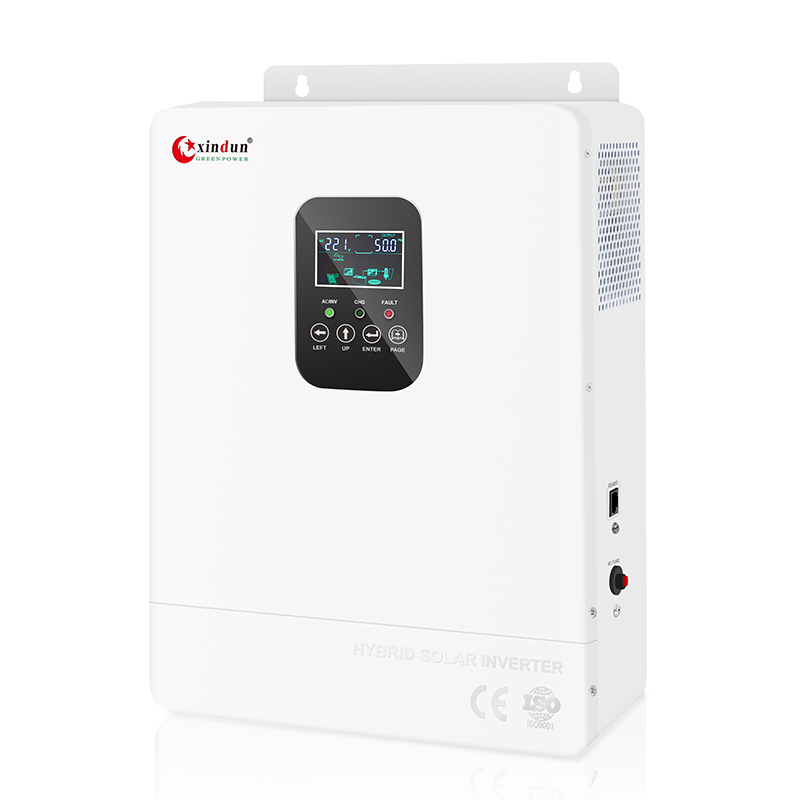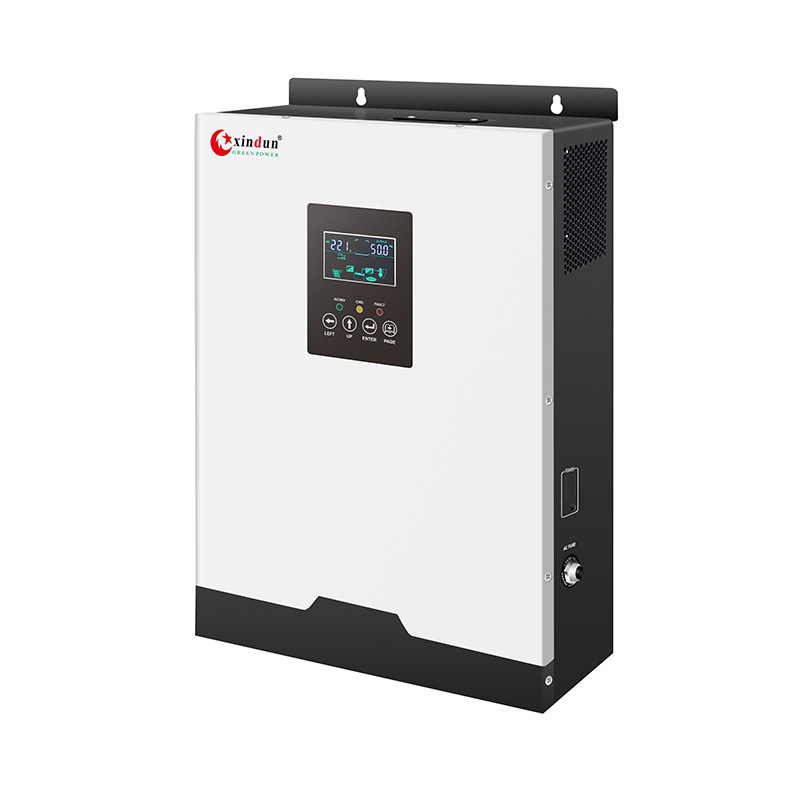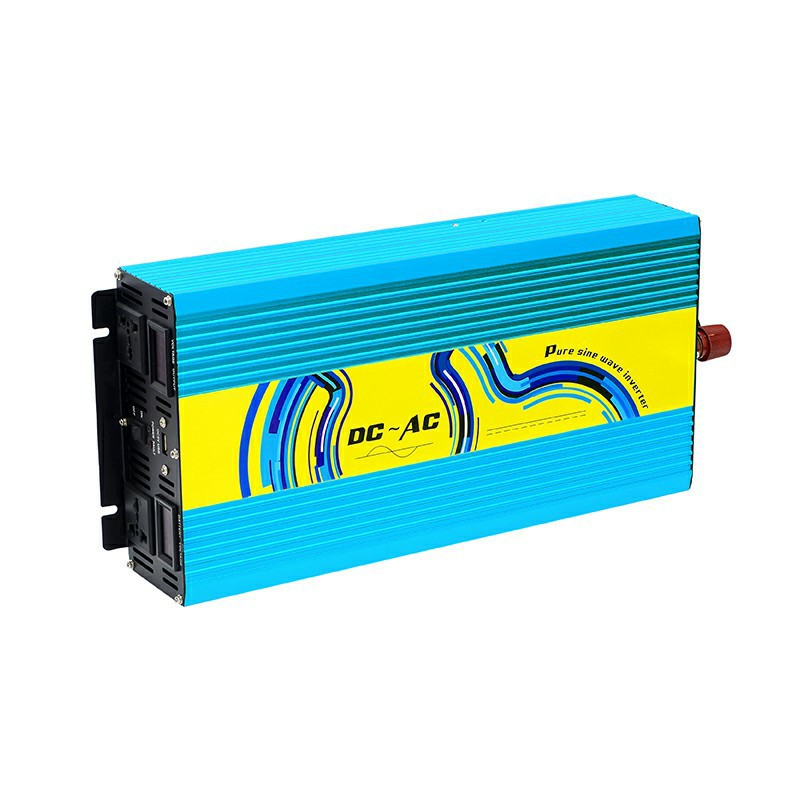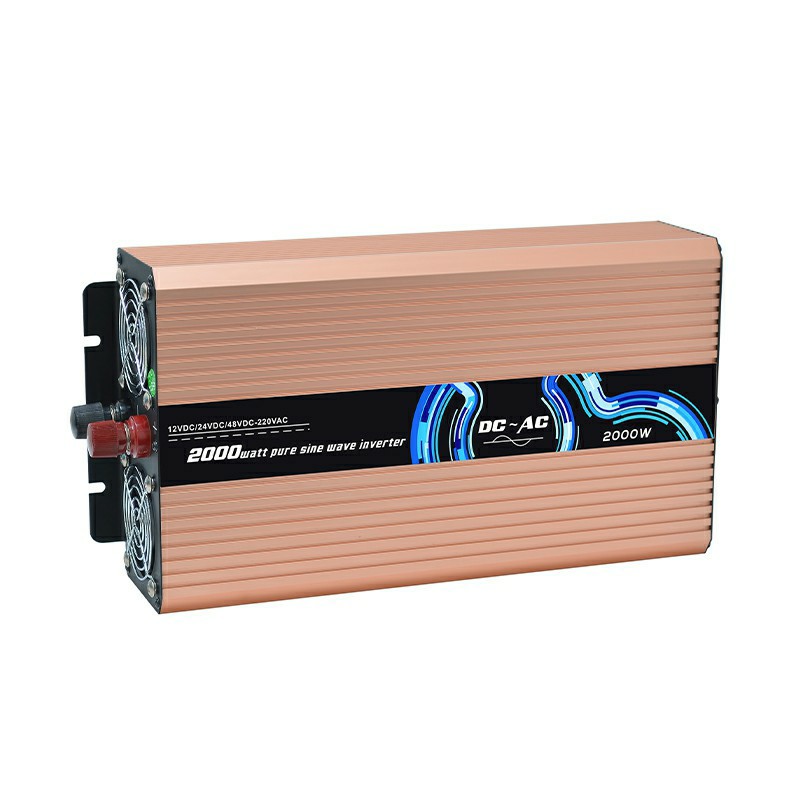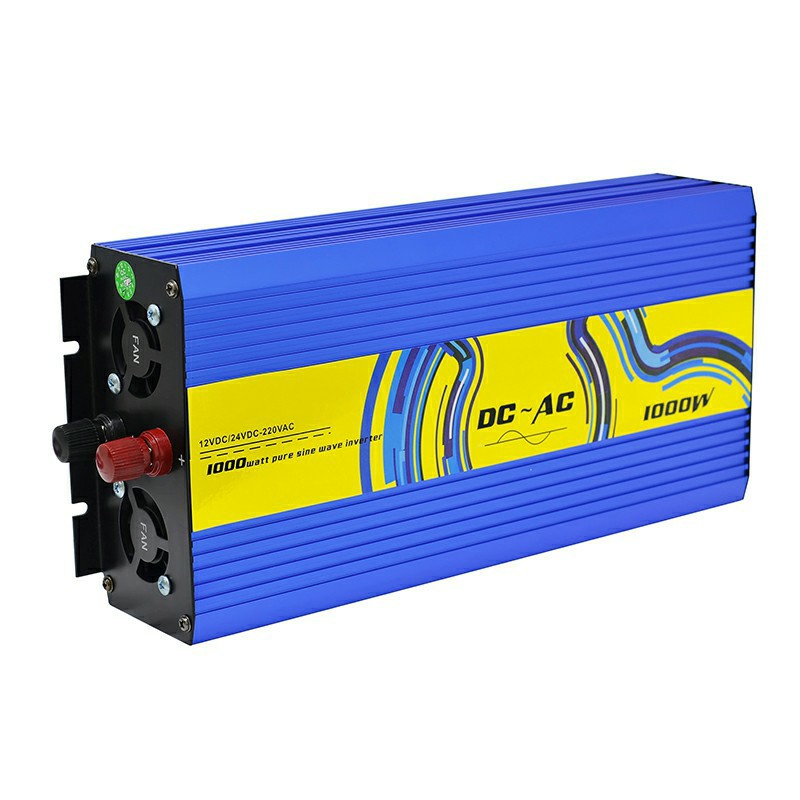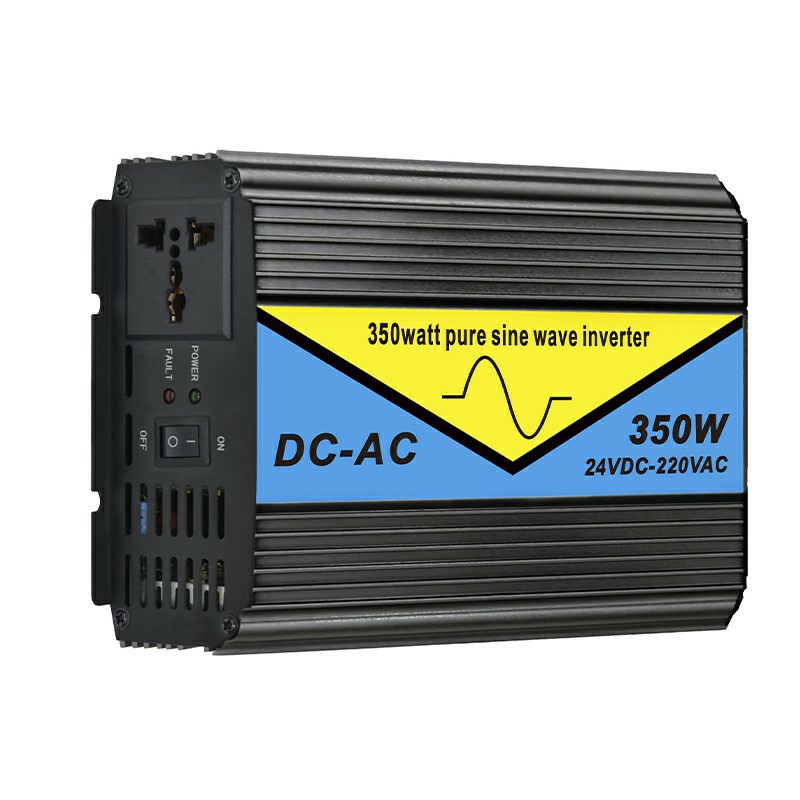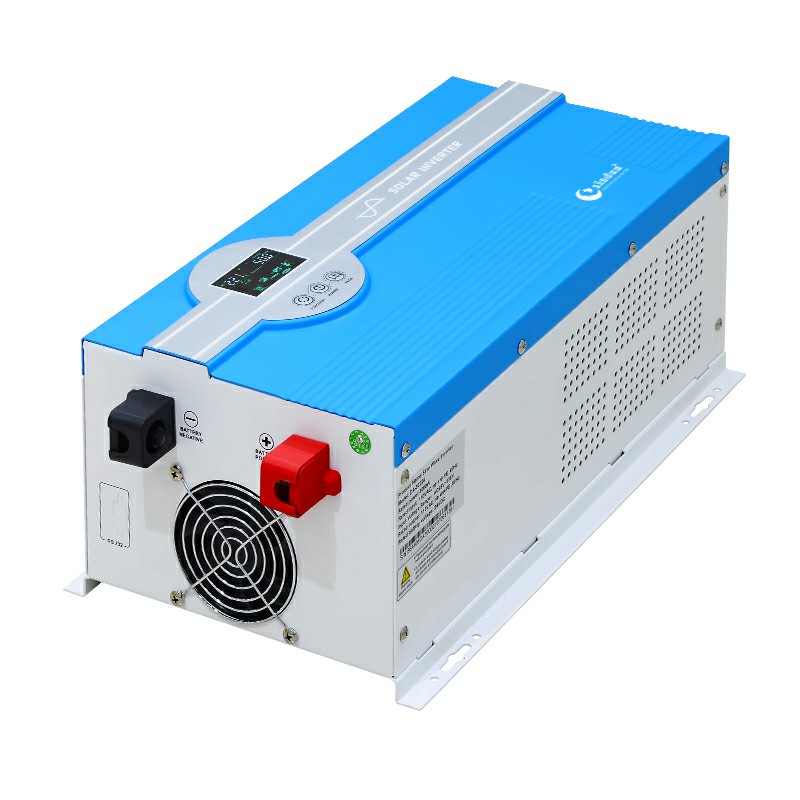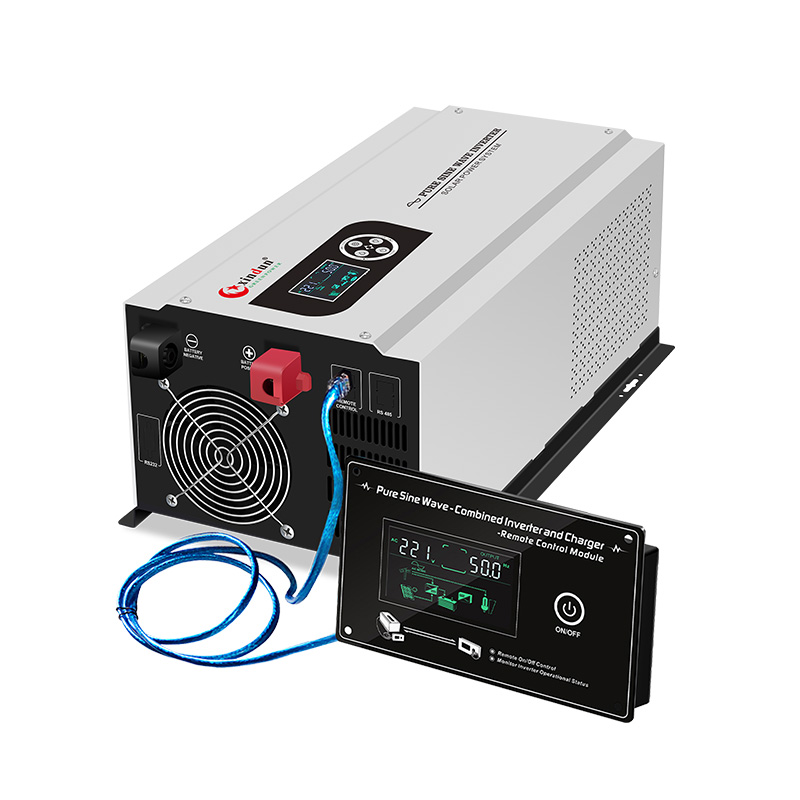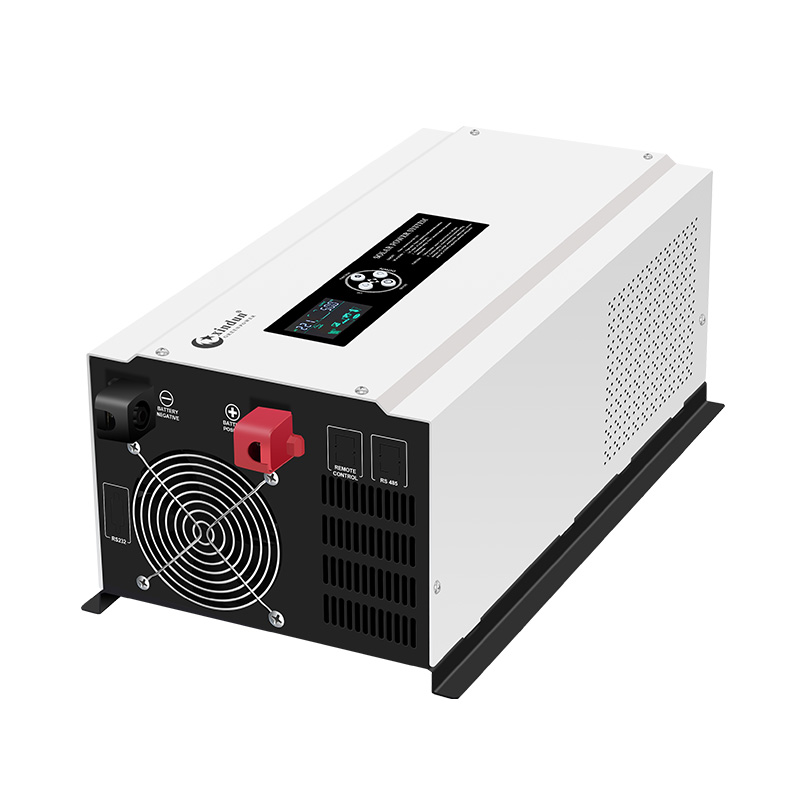| 01 | The solar inverter can work with our without batteries. |
| 02 | Inverter can still work normally without power grid. |
| 03 | Under the state of power grid and solar supply, the inverter can start automatically. |
04
| Solar energy and power grid can power AC loads together. |
| 05 | Both solar energy and power grid can charge the battery, battery types optional (lead-acid, lithium-ion, etc). |
| 06 | Dual MPPT input (tracking range 60V-350V), precise algorithm, efficient use of solar energy. |
| 07 | Large LCD screen, operating parameter could be displayed in real time. |
| 08 | Various communication ports and remote controls (RS232\RS485\Mobile APP\SNMP\GSM). |
| 09 | Pure sine wave output, isolated low frequency transformer, strong impact resistance. |
| AC Modes |
1 When the mains power is normal and the current solar power generation is bigger than the load power, solar power will feed the load completely and the surplus solar power will feed the battery and transmit to the grid.
2 When mains supply is normal and the solar power is smaller than the load power, the insufficient part is supplemented by the mains supply; The solar and the mains supply feed the load together.
3 When mains supply is abnormal, the inverter changes to independent invert mode. When the solar power is bigger than the load power, the solar power will feed the load completely, and the surplus part will charge the battery. When the solar power is smaller than the load power, the insufficient part is supplemented by the battery; the batteries and the solar feed the load together.
4 When solar has no generating power, the mains supply will charge and store energy to the battery through the inverter.
5 When mains supply is abnormal and there is no solar, batteries will feed the load. |
| Battery Modes |
1 When the mains power is normal and the current solar power generation is bigger than the load power, solar power will feed the load completely and the surplus solar power will feed the battery and transmit to the grid.
2 When the solar power is smaller than the load power, the insufficient part is supplemented by the battery. The solar and the battery will feed the load together.
3 When solar power runs out or very little and the battery is placed to below 48/96 voltage, the discharge power of the battery will be linearly reduced. The insufficient part will be supplemented by mains supply. And when it reaches the low-voltage protection of the battery, the load will be completely fed by the mains supply .
4 When mains supply is abnormal, the inverter will work in the independent invert mode. The solar power will feed the load. And if the solar power is insufficient, it is supplemented by the battery.
Note: under the BATT mode, if there is no solar, mains supply won’t charge the battery.
|
| Parameters |
| Model:ZRS | 3KW | 5KW | 8KW | 10KW |
| PV Input | Max input voltage(At 25℃) | 150V | 350V |
| MPPT tracking range | 60V~120V(Recommend: The open circuit voltage should be less than 120V) | 120V-240V(Recommend: The open circuit voltage should be less than 240V) |
| MPPT route number | 2 |
| Max input power | 1960W/1960W | 3360W/3360W | 5600W/5600W | 6700W/6700W |
Battery
(Flexible configuration) | Type of battery | Lead-acid battery / Lithium-ion battery |
| Rated voltage | 48V | 96V |
Max charging current
(Can be set,Recommended 0.1C) | 70A(PV)/35A(Mains) | 120A(PV)/60A(Mains) | 100A(PV)/10A(Mains) | 120A(PV)/20A(Mains) |
| Float voltage(Can be set) | 55.2V | 110.4V |
| Charge voltage(Can be set) | 56.8V | 113.6V |
| AC Input | Rated voltage | 220V/230V |
| Input voltage range | 187V~264V |
| Rated input frequency | 50Hz/60Hz±5Hz |
| Loss protection time | ≤2S |
| Reconnection time | 30S |
AC Output
(PV/Battery mode) | Rated output power | 3KW | 5KW | 8KW | 10KW |
| Rated output voltage | 220V/230V |
| Output voltage accuracy | 2% |
| Rated output frequency | 50Hz/60Hz |
| Output frequency accuracy | 1% |
AC Output
(Mains mode) | Rated output power | 3KW | 5KW | 8KW | 10KW |
| Output voltage | 187V~264V |
| Output frequency | 47~52Hz/57~62Hz |
| Regular Parameter | Topology | Transformer isolation |
| Protection level | IP20 |
| Display | LCD+LED |
| Communication | RS485(Optional) |
| Operating temperature | -20℃~60℃(Derating above 45°C) |
| Storage temperature | -20℃~60℃ |
| Noise | ≤60dB |
| Relative humidity | 20%~95%(No condensation) |
| Highest altitude | 2000m(More than derating) |
| Machine dimension(L*W*Hmm) | 467*280*508 | 548*300*675 |
| Package dimension(L*W*Hmm) | 530*340*635 | 610*440*800 |
| N.W(kg) | 40 | 49 | 70 | 75 |
| G.W(kg) | 47 | 56 | 80 | 85 |
| Installation Method | Tower |

With power grid, solar, and batteries, inverter always uses solar energy first:
1, If the solar power generation is 1000W and the AC load is 600W. The solar power supply 600W to the AC load, and 400W is left to charge the battery. At this time, the power grid does not provide energy.
2, If the solar power generation is 1000W, the AC load is 1600W. The solar power supply 1000W for the AC load, the power grid supply 600W for the load (AC priority mode) or the battery supplies 600W for the load (Battery priority mode)
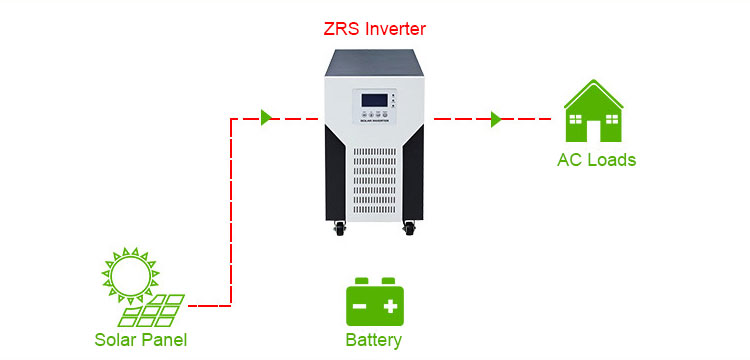
No power grid and batteries, but solar is available, the inverter automatically turns on and operates in the solar state, and the AC load is completely powered by the solar energy.
If the solar power generation is 1000W, the total power of the AC load can only be ≤1000W, and over 1000W will trigger the overload protection.
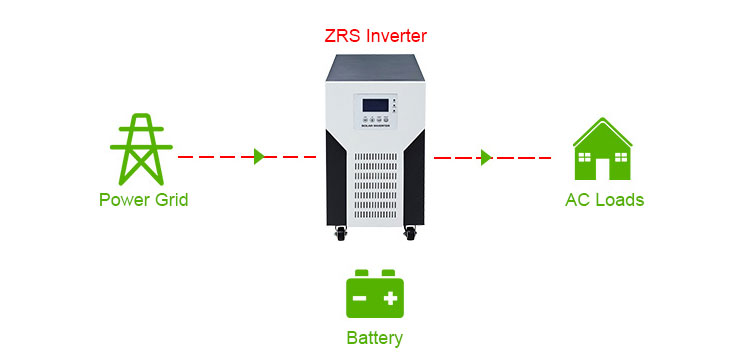
No solar and batteries, but power grid is available, the inverter automatically turns on and operates in the power grid state, and the AC load is completely powered by the power grid.
If the power gird is powered off, the AC load cannot continue to operate.
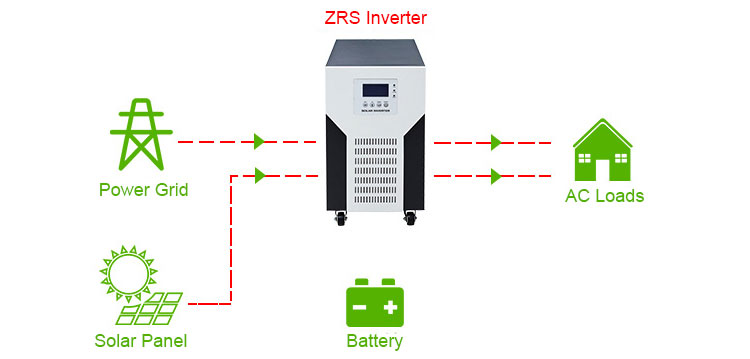
No battery, but power grid and solar is available,inverter always uses solar energy first: 1,If the solar power generation is 1000W, the AC load is 600W. The solar powers the AC load to 600W. At this time, the power grid does not provide energy. 2,If the solar power generation is 1000W, the AC load is 1600W. The solar power supply 1000W and the power grid supply 600W for the AC load. |
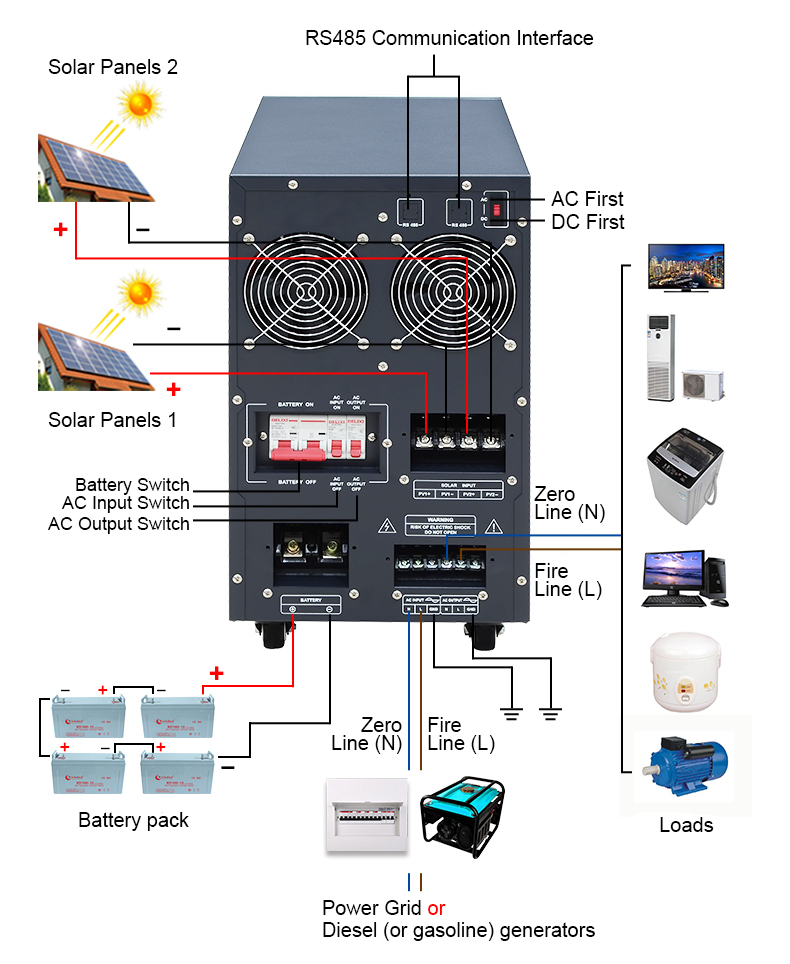
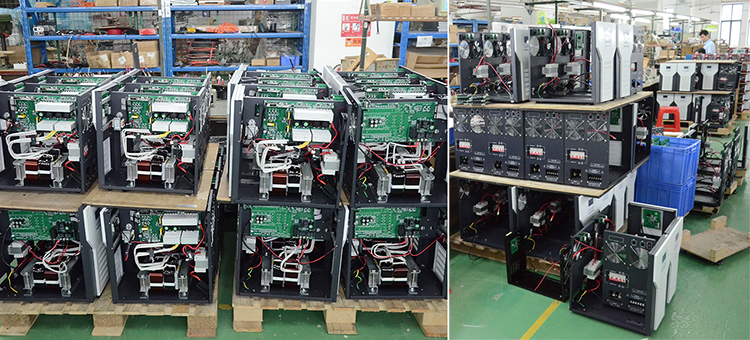
PV
and the mains complementary storage inverter is applied to solar energy
storage micro-grid system. Solar system could be with or without
storage battery configuration. A solar energy storage micro-grid system
is made up when batteries are configured. A solar energy micro-grid
system is made up when batteries are not configured. The system uses PV
energy as priority. When the energy of PV is not enough, it can be
supplemented by city power or batteries. When the PV energy is surplus ,
it would be stored in batteries, to maximize the utilization of PV
power generation, so as to achieve the purpose of electricity cost
saving.
◆ The solar inverter can work with our without batteries.
◇ Inverter can still work normally without power grid.
◆ Under the state of power grid and solar supply, the inverter can start automatically.
◇ Solar energy and power grid can power AC loads together.
◆ Both solar energy and power grid can charge the battery, battery types optional (lead-acid, lithium-ion, etc).
◇ Dual MPPT input (tracking range 60V-350V), precise algorithm, efficient use of solar energy.
◆ Large LCD screen, operating parameter could be displayed in real time.
◇ Various communication ports and remote controls (RS232\RS485\Mobile APP\SNMP\GSM).
◆ Pure sine wave output, isolated low frequency transformer, strong impact resistance.
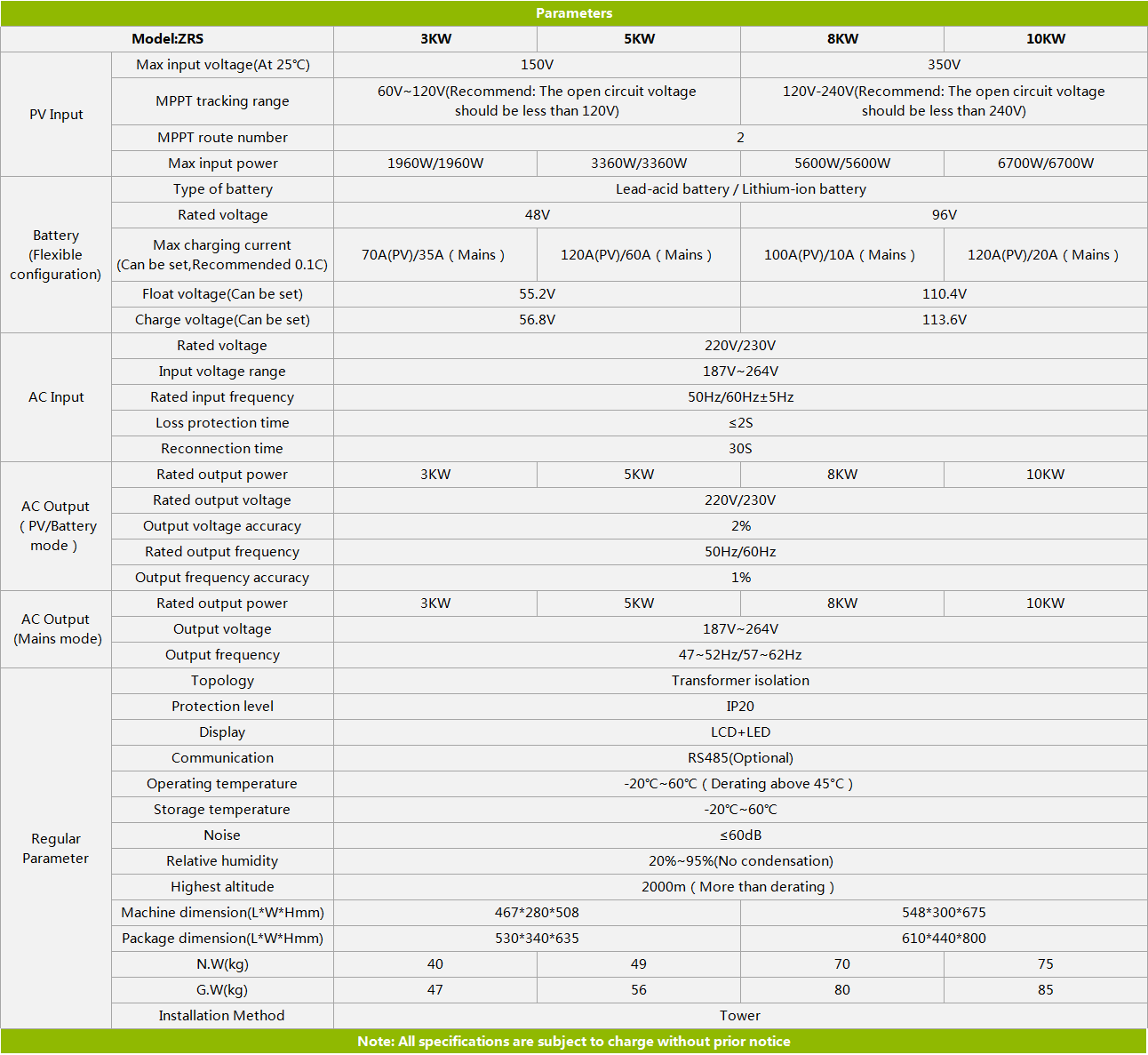

With power grid, solar, and batteries, inverter always uses solar energy first:
1, If the solar power generation is 1000W and the AC load is 600W. The solar power supply 600W to the AC load, and 400W is left to charge the battery. At this time, the power grid does not provide energy.
2, If the solar power generation is 1000W, the AC load is 1600W. The solar power supply 1000W for the AC load, the power grid supply 600W for the load (AC priority mode) or the battery supplies 600W for the load (Battery priority mode)

No power grid and batteries, but solar is available, the inverter automatically turns on and operates in the solar state, and the AC load is completely powered by the solar energy.
If the solar power generation is 1000W, the total power of the AC load can only be ≤1000W, and over 1000W will trigger the overload protection.

No solar and batteries, but power grid is available, the inverter automatically turns on and operates in the power grid state, and the AC load is completely powered by the power grid.
If the power gird is powered off, the AC load cannot continue to operate.

No battery, but power grid and solar is available,inverter always uses solar energy first:
1,If the solar power generation is 1000W, the AC load is 600W. The solar powers the AC load to 600W. At this time, the power grid does not provide energy.
2,If the solar power generation is 1000W, the AC load is 1600W. The solar power supply 1000W and the power grid supply 600W for the AC load.





